The Apple iPad 2 Review
by Brian Klug, Anand Lal Shimpi & Vivek Gowri on March 19, 2011 8:01 PM ESTSmart Covers
Lately Apple has been trying its hand at first party case solutions. It stated with the bumper on the iPhone 4, carried over to the original iPad, and continues now with the iPad 2. Bumpers were an interesting idea, though clearly designed to mitigate unintended antenna attenuation from holding the phone in your hand, and the first iPad case, while novel, never felt quite right in the hands and had an unhealthy attraction to table crud. I also go over smart covers in our video review.
Third time's a charm, and this time they're both better engineered and endowed with the magic of magnets - they're called called smart covers.
I told Anand that I wasn't going to buy another expensive first party cover at launch just because there weren't any other options, yet here I am with a black leather smart cover.
Smart covers come in two materials - polyurethane and leather. There are five neon polyurethane colors and five more subtle/traditional leather colors. Polyurethane runs $39.00, leather will cost you a somewhat staggering $69.00. I opted for the black leather, Anand opted for neon orange and blue to match the official AnandTech color scheme (why didn't I think of that?).
The polyeurethane covers have a soft textured feel to the front and get the job done at the same price as the first Apple iPad cover. The colors aren't quite as saturated as you'd expect (it's more of a light blue and creamsicle rather than neon blue and lambo orange) but they still look pretty good.
The leather version feels and looks real, and passes the standard sticky test for leather. The outside of the cover is the actual leather surface, whereas the inside is a soft microfiber material. Both the polyurethane and leather models have this microfiber interior. The benefit is that it does keep the screen somewhat clean, the only downside is that it doesn't clean along the vertical strips where the smart cover folds. After a couple of days, you end up with some vertical strips of greasiness punctuated by thick ones of clean.
The smart cover aligns and attaches to the body of the iPad 2 using six magnets along its side that line up with a similar set of magnets on the device. When I acquired the smart case at launch, I immediately set out to determine what magnetic wizardry was at play and borrowed some magnetic viewing tape from my friend Alex (who wrote the glass section). Also no, the smart cover does not work with the iPad 1.
You can clearly see the set of magnets on the iPad 2 and smart cover that are used for alignment using the magnetic viewing film. This strip is from United Nuclear, but there are other vendors online. There are two visible sets of three magnets on the iPad 2 which mate up with corresponding patterns of magnets on the smart cover.
The magnetic viewing film is comprised of tiny beads with a small nickel filament inside, and are suspended in a fluid between two transparent polymer sheets. One side of the bead is reflective and appears light green, the opposite side is matte and appears dark green. The nickel filament orients along the magnetic field, and just like that we can see it.
The iPad 2 also has magnets on the far right side to keep the smart cover latched closed. These mate up to an appropriate set of magnets on the smart cover. Inspecting the smart cover carefully also shows a circular magnet which is used to trigger the iPad 2’s magnetic lock sensor.

The circular magnet above the strips of bar magnets is used for signaling the closed/lock sensor on the iPad 2.
Unsurprisingly, you can also make MacBooks and MacBook Pros that use the same kind of magnetic latch sensor go into standby by waving the smart cover or iPad 2 over just the right place. There’s an excess of magnets on the far right of the smart cover to hold the flap in position when rolled upon itself. The only other unintended consequence of putting so many magnets in the iPad 2 is that it sticks to every ferromagnetic surface. The cafe I frequent has metal tables, and the iPad 2 literally sticks to the surface until you yank it off.
The first time you fire up the iPad 2, the area in general settings lacks any toggles for the smart cover lock. After you attach the smart cover and activate the sensor once, a new toggle appears. It's one of those subtle things that Apple does which fits with the - keep extraneous settings and indicators hidden when they're not actually doing something - philosophy.
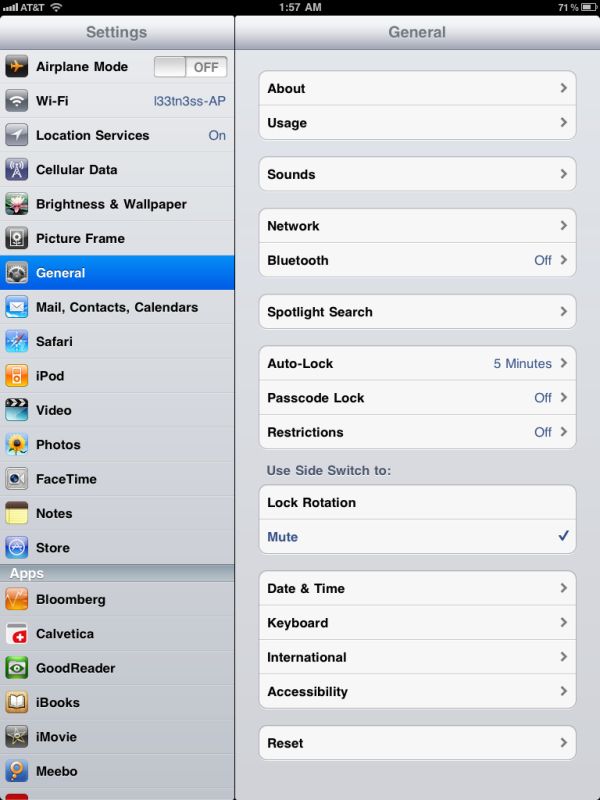
Left: Before attaching the smart cover for the first time, Right: After attaching the smart cover.
The smart cover can be rolled onto itself and into a triangle, which then angles and supports the iPad at 15 degrees for typing on a flat surface.
Push the iPad 2 further, and it'll stand upright at 115 degrees for use as a more traditional display, say if you have the Bluetooth keyboard or want to use it to watch movies.
The smart cover, while novel, has a few puzzling flaws. First up is what position to put the flap when the cover is opened and held in the hands. Folding the smart cover around to the back works, but magnetic attraction is weak and flap doesn’t stay in place at all. This is how users place the flap in videos on Apple.com and in marketing materials. The cover also makes it difficult to access the power and volume buttons in this position, though admittedly locking functionality with the smart cover should be left to the flap.
Left folded completely over, the second problem is that the cover then completely occludes the iPad 2’s rear facing camera. The other option is to fold the cover in half, which is probably the best solution. You don’t cover up the camera, and the cover doesn’t flap around as much. It still isn’t entirely secure, however.
Third, the smart cover leaves you with the same limitation as the first Apple iPad case: there's no way to make the iPad 2 stand up in portrait mode. There are a couple of landscape options as we described earlier but if you want to prop up the iPad 2 in portrait mode you're out of luck.
The final problem is that the smart cover doesn’t protect the rear of the iPad 2, which any iPad user will tell you is the surface that immediately starts to show aging from scuffing, scratching, denting, and white aluminum oxide from handling. Aluminum is a soft material, and while the iPad 2's aluminum seems to be harder and less porous than the MacBook Pro, it still picks up table crud like nobody's business. It’s frustrating because the smart cover is otherwise one of the most innovative parts of the iPad 2 experience.
As a stand, the smart cover is excellent, and it’s also nice to see Apple finally adopting some magnetic signaling for when to lock the device. Any Blackberry user will tell you this isn’t anything new at all, but execution here is indeed awesome.


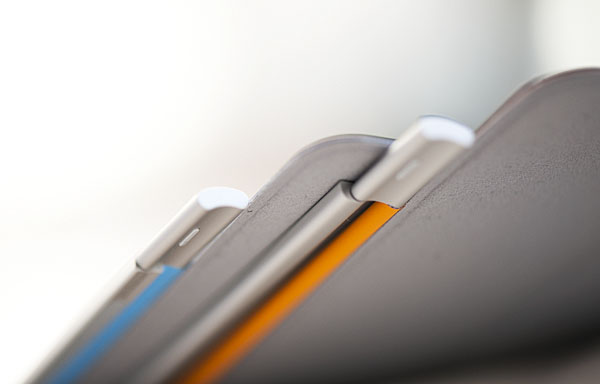
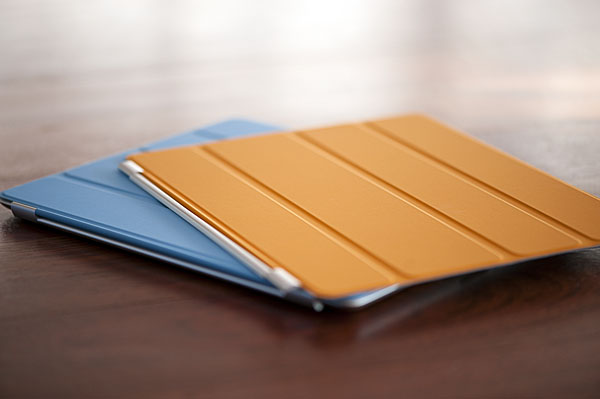
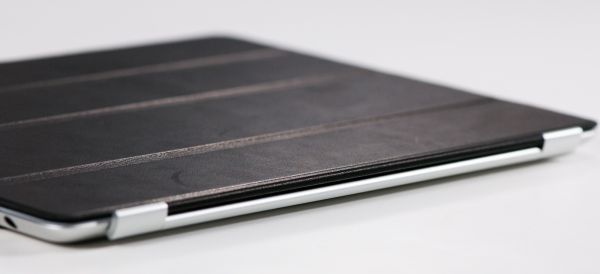
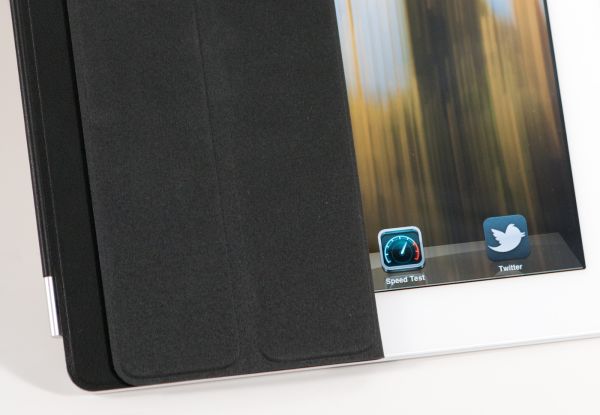
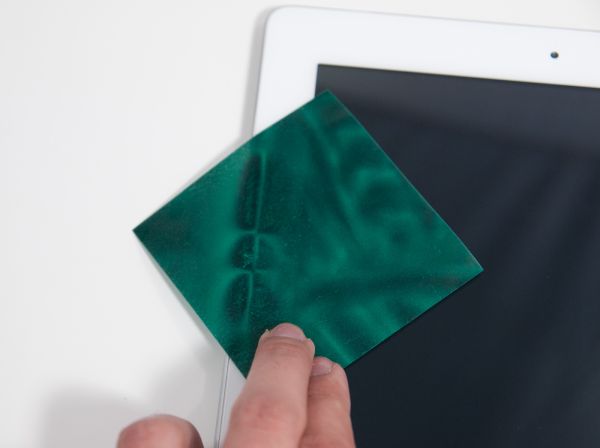
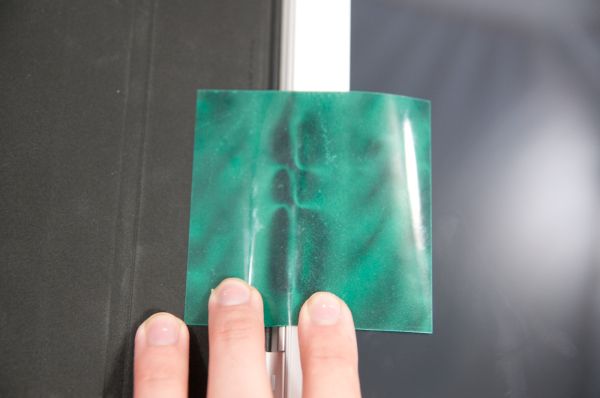







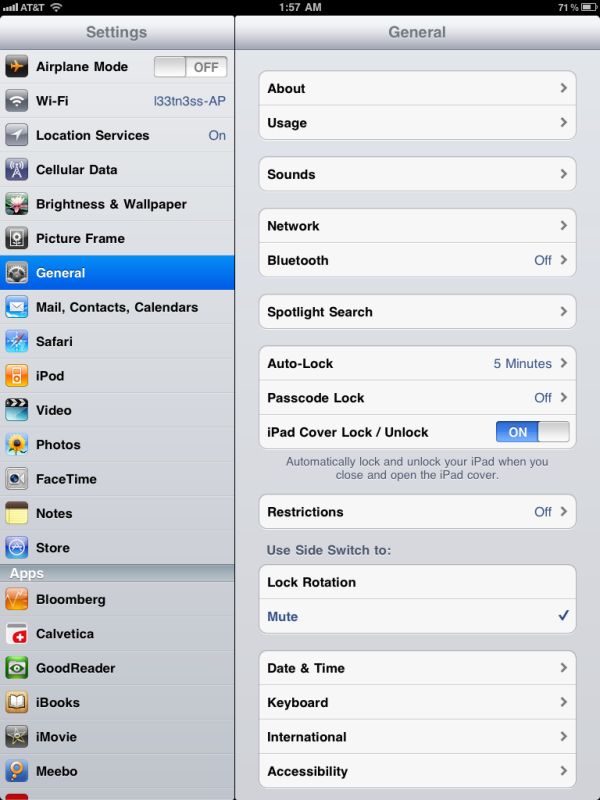
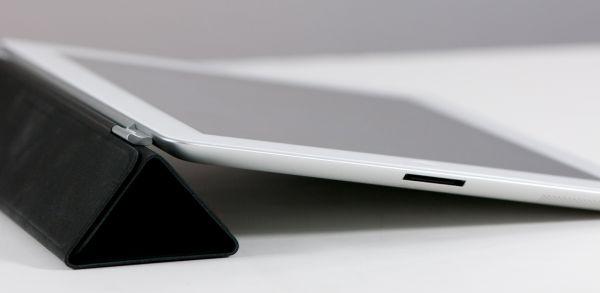
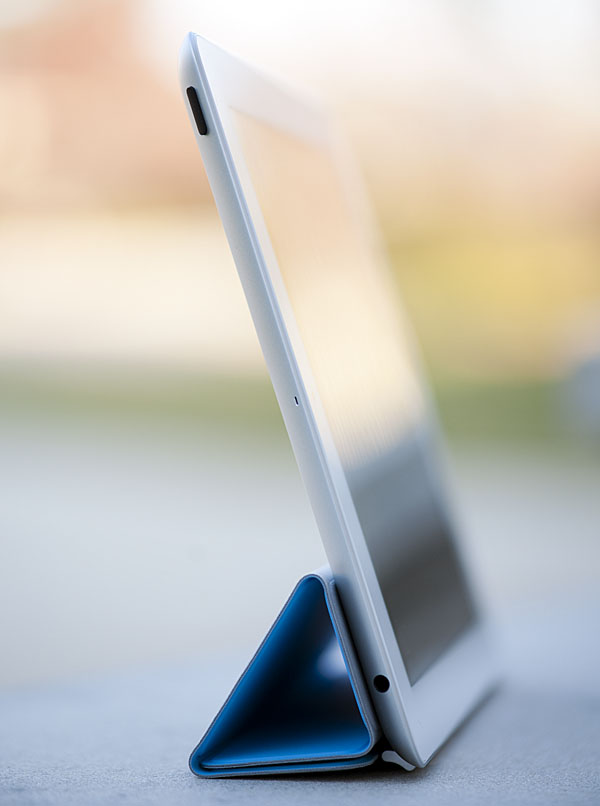
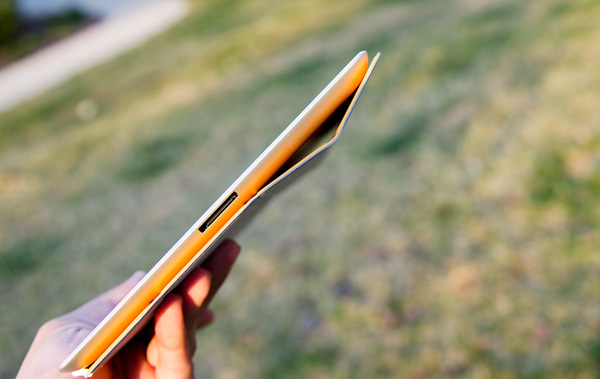
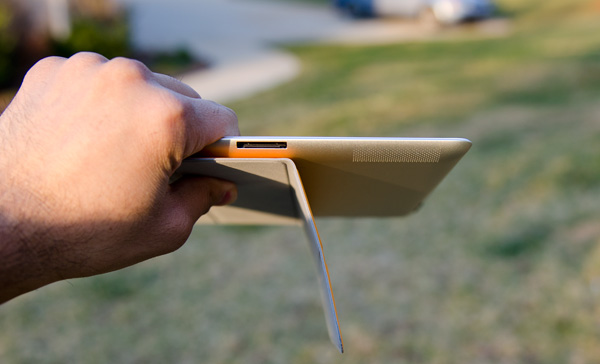








189 Comments
View All Comments
name99 - Sunday, March 20, 2011 - link
"you cant be a very tech inclined person if if you think you are, if you dont know that 1.2 GHz quad core arm cortex is coming later this year and so most tech people are waiting on that to happen"Really? You're going to buy that crappy 1.2GHz quad core A9? You're not going to wait the even better 1.8GHz quad core A15 that will be available in late 2012? Sucker!
Personally I think that if you buy now, before the 802.11s wireless spec is standardized, and before the chipsets support OpenGL 6, you're just throwing your money away. But I tell you, come 2020, that's going to be one SWEET rig that I finally get round to buying.
CZroe - Sunday, March 20, 2011 - link
"Just to test it out, I shot a series of videos of my car and stitched them together using iMovie, then added some titles and a soundtrack."I found iMovie completely useless on my iPhone 4 and iPhone 3GS because I could not combine two clips/videos nor could I make a runing commentary with titles.
Are you sure that the iPad 2 version can do this or were all the "videos" in the "series" made from the same longer video?
CZroe - Sunday, March 20, 2011 - link
"Lately Apple has been trying its hand at first party case solutions. It stated with the bumper on the iPhone 4, carried over to the original iPad, and continues now with the iPad 2."When you fix that typo ("stated" instead of "started"), you may also want to correct that fact about what came first.
The iPad launched before the iPhone 4 so the official iPad case launched before the iPhone 4 bumper case, unless I somehow missed it and the official iPad case came out mid-life for the iPad.
darwiniandude - Sunday, March 20, 2011 - link
pja: The 64gb 3G version was at most $1049 AUD rrp, before the price drop, the 64gb WiFi one was $899 AUD rrp. The 64gb WiFi was never $1100 AUD unless you were looking at eBay pricing while stock was scarce. Anyway as this article states, the iPad, provided it does what you require, is a great combination of battery life, weight and size. Tablets certainly aren't for everyone though.Deepcover96: Agreed. Hopefully this changes later and I'm sure it will, but for the moment Android has a poor selection of AAA titles. Nothing like Garageband or iMovie, but certainly nothing like Infinity Blade, Nanostudio, Beatmaker 2, World of Goo etc. I'm sure Gameloft and EA will eventually do more, provided they can monitize ok on Android. And for the limitations of iOS apps, I wouldn't be able to have an iPad as my only portable device if it were not for Pages/Keynote/Numbers/TouchDraw/Photogene and so on.
CZroe: iMovie for iPhone (last year even) could do what you ask after the first update. This year it's greatly improved. A downside to this app and other Apple apps can be a lack of well known gestures. People don't know in Pages that if you hold your finger on an object, swiping with another finger moves it by one pixel, swipe with two moves it by 5 pixels, and so on. Likewise in iMovie, you swipe down through footage like you were cutting it at the playhead to make a cut. Each cut is a faultless transition, but then you can title each cut area separately. So you cut where you want the text to change, and label accordingly. In the new iMovie (only used on iPhone 4 as I sold 1st gen iPad whilst waiting for iPad2) when you import video there are standard iOS movie trim handles over the clip, you only need import the bits you want from each clip. But you could definitely always import more videos into one project in the last version. I think Apple need a modal help "Would you like to watch a short video about iMovie?" dialog or something on the first few launches with a website link, all these apps have their features tucked away so people often think they're less powerful than they are. I'm not sure Apple is choosing the best ratio of controls to expose to the user here. And yes, iPad case came out before iPhone 4, definitely.
kschaffner - Sunday, March 20, 2011 - link
An awesome free web browser for the iPad is Terra, it gives you tabs, has an incognito mode. etc I would definitely check it out.darwiniandude - Monday, March 21, 2011 - link
Thanks, I'll check it out. I only use iCab as I bought it for iPhone, it got a universal update and I've been happy enough not to bother looking elsewhere. (it does have a 'privacy' mode) also caching of pages for when you're offline. Anyway, I've downloaded Terra and will play with it on the new iPad. It looks nice.Ha, there's a Terra Incognito HD game, lol
medi01 - Monday, March 21, 2011 - link
Looking at the rounded back of ipads, ipad2 in particular, it's hard to understand, why the newer version is easier to hold.With rounded surface, they both should be harder to hold, and ip2 in particular.
darwiniandude - Monday, March 21, 2011 - link
The original had flat sides, probably about 4 or 5mm, and a giant convex back, domed in the centre. The new one is thinner, has no flat sides (the curve just falls away from the front) but it's more of a bevelled edge, and once you're about 1cm in from the edges the back is perfectly flat.Is it easier to hold? Dunno, haven't got mine yet :) But that's what people are saying.
thebeastie - Monday, March 21, 2011 - link
Everyday I use my Ipad even when I don't think about it.I use it as my wake up Radio clock via TuneIn Radio app. This app is great as I can go to sleep with the timer and then wake up to Internet radio which beats the hell out of analog radio. I been looking at a digital radio for a while but there is no reason now for me in the world to do that, and digital radios aren't cheap, it is just another device the Ipad as replaced perfectly with much better screen interface, and life time of free updates as app software evolves.
I think the Anandtech authors here saying that they found them selfs not using their original Ipad1 after a while didn't adapt their imaginations enough of where it can be used, maybe it is something to do with age and being hardwired into their life styles, dare I say it but becoming 'old school'.
I am wondering how they wake up in the morning, I find it hard to believe there is a better way to wake up in the morning then from an Ipad radio app, if it is about sound quality there are plenty of speaker options.
For people who don't get it then I say you just don't see things the same way, I would rather shove a pine cone up my backside then wait more then 2 seconds to be able to look at my email. A laptop takes ages to boot up let a lone the loading of the email client.
The main reason I got an Ipad was because I LOVE to read the paper outside, but the wind blowing the paper around drives me nuts, the Ipad is a killer in this regard.
damianrobertjones - Monday, March 21, 2011 - link
I have an Asus EP121, 4Gb ram, SSD drive, etc. It takes 20 seconds to start from cold onto the desktop. Anotgher 2 seconds to pen my email application.Is that fast enough?
from sleep, we're talking seconds